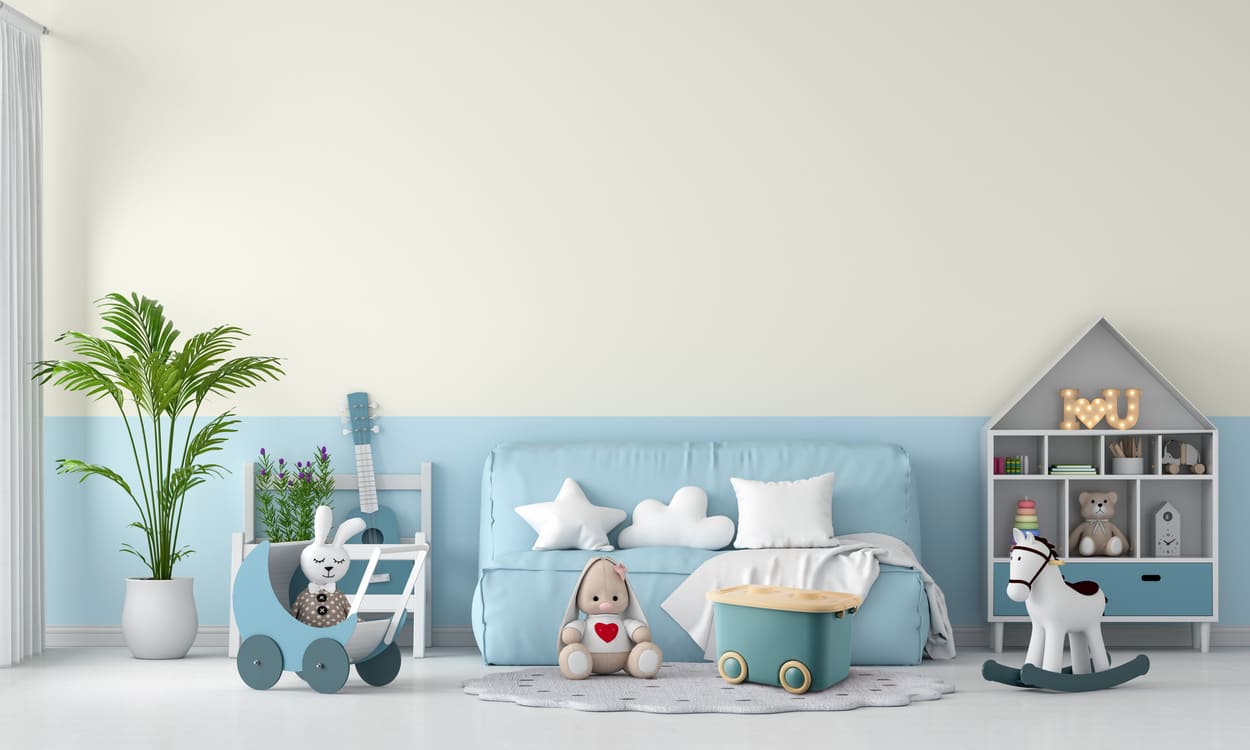Children’s bedrooms and playrooms seem to be the most difficult areas of the house to keep tidy. These simple tips will help you and your children stay on to p of the clutter Everything Has Its Place
Storage boxes
Storage boxes are the most popular and convenient place to store things. They can be plastic or wooden, one colour or colourful, with cartoon character prints. Many of them have wheels which makes them more practical and mobile.
Shelves
A shelf unit is a great alternative to drawers. It takes up little space and doesn’t clutter the room. You can place it in the corner of the room or along the wall. Some sheliving units come with some of the areas boxed off with cupboard doors which allows some things to be stored out of sight. Choose a shelf unit with rounded edges to avoid injuries.
If your child doesn’t have many toys, they can be placed however you like, but if there are a lot of them, follow these recommendations:
- fill the lower shelves with a large volume of toys to maintain the weight balance of the design;
- place the child’s favourite toys on the central shelves (at the child’s eye level);
- fill the upper part with toys with small parts and stuff that is rarely used.
Dressers
The next option to store toys is a dresser. The most practical are vertical models. They don’t take up much space, save free space, look modern and beautiful, and it will be convenient for your kid to take two handles at once and pull out the box independently. Modern dressers are frequently made not of heavy wood but of light and practical plastic. They are popular due to:
- Bright design. Plastic surfaces are painted in a variety of colors, and they’re often printed with cartoon characters, flowers, cityscapes, etc.
- Low weight. It allows moms and dads to easily move the dresser to the right place in the process of cleaning or changing the position of furniture. Moreover, this indicator is extremely important for the safety of the child.
- Practicality. If a child draws on the surface of the drawer, it can be quickly and easily scrubbed with a damp cloth and detergent. Plastic doesn’t succumb to corrosion and rot.
- Affordability. Plastic dressers are cheaper than wooden models. Most models are divided into 3, 4, or 5 sections. When buying, it’s worth considering the quality of the plastic.


Toy Boxes
Often, boxes can be made in the form of cartoon characters and funny animals. These are
the main advantages:
- compactness (especially folding models);
- low weight;
- large capacity;
- bright and unusual design
- affordable price.
For manufacturing, a dense cotton or oilcloth fabric is used.
Get your Children into the Habit of Tidying up
Teaching your kids to keep a space tidy is possible The first step is to regularly remove toys that are:
- damaged and beyond repair;
- no longer age-appropriate;
- have become uninteresting or forgotten.
It’s better to do these regular tidy -ups with out the child there as they may object to things being removed.
The second step is to sort out the remaining toys into categories:
- Favourite toys which your child plays with most frequently. They should be placed where the child can independently take them for play and put them back for storage. These can be shelves of a rack at eye level, drawers, or baskets. They should also be placed where children can see them, because if they don’t find them, they will start turning over all the drawers and baskets to find them.
- Toys which are used less and toys which require a parent to assist in the play. These can be put away in storage areas out of sight or even out of reach of the child. They can ask the parent to help when they want to play with those things
- Toys that require parents’ participation or have a specific course of play (for example, board games). You can store such toys on the top shelves of the rack or in the dresser.
Sort the toys not only by frequency of use but also by type. For example, soft toys should be in one place, construction toys in another, and dolls or cars in the third. To make it easier for the child to remember their location, you can place stickers on the boxes or drawers with the image of certain toys.
It’s important to leave some room for clutter. Of course, all parents dream of cleanliness in the children’s room, but it’s impossible to constantly maintain order. So, define a zone for play, where your kids can play and scatter toys as desired. To define the boundaries, you can lay a colorful carpet.
The most important thing is to tidy up regularly, include your child in the process and make it fun. You can do this by:
- Using colourful and fun storage solutions, like baskets, boxes, and so on;
- tell your children that the toy storage areas are the Home or castle where the toys like to live when they are not being used
- make a couple of “hiding places” — children love secrets and hidden places, so they will be more willing to hide toys.
If tidying up is fun it can become a necessary part of the child’s play and habits and soon, ir will become normal to put things away at the end of playtime.